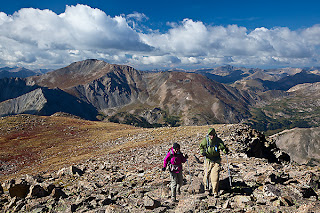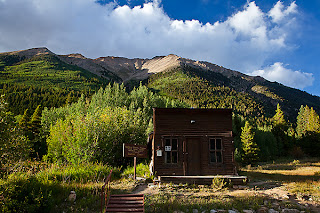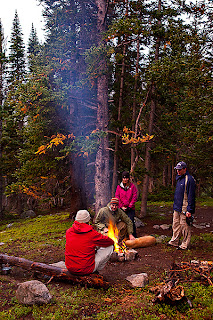FOR IMMEDIATE RELEASE: FEBRUARY 1, 2011
The Wittliff Collections present
“Big Bend: Land of the Texas Imagination”
ON VIEW JANUARY 18 – JULY 17, 2011
RECEPTION & PANEL DISCUSSION 6:30 PM, MARCH 31
SAN MARCOS, TX — The majestic, rugged land in West Texas is a world apart. As writer Joe Nick Patoski says, “This is the mythic Texas, a place where you can see all the way to tomorrow on a clear day.” Designated a national park in 1944, the Big Bend has inspired generations of writers, filmmakers, photographers, and musicians. Selections of their works are on view now through July 17 in the new Wittliff Collections exhibition, Big Bend: Land of the Texas Imagination.
In conjunction with the exhibition, on March 31 the Wittliff Collections will present a 6:30 p.m. reception and 7:00 p.m. panel discussion on the Big Bend with photographer Laurence Parent, authors Joe Nick Patoski, Barbara “Barney” Nelson, and Jake Silverstein, editor of Texas Monthly, and Marcos Paredes, a long-time National Park Service River Ranger at Big Bend, recently retired. Attendees are asked to RSVP to southwesternwriters@txstate.edu. (More information is below.)
The Big Bend exhibition and program are presented in support of the 2010–2011 Common Experience theme of “Sustainability” at Texas State University-San Marcos. Admission to both the exhibition and program is free and open to the public. The Wittliff Collections are located on the seventh floor of the Alkek Library at Texas State.
Big Bend: Land of the Texas Imagination explores the way authors and others have been influenced by and interpreted the geology of Big Bend and its culture. Maps, photographs, books and articles, manuscripts, journals, and other items illustrate how the Big Bend has infused mythic storytelling and folklore, served as the scene of the crime for mysteries and thrillers, added depth to novels, stories, and memoirs, effected transcendent nature writing, spurred environmental calls to action, starred as atmospheric location on film, and played a part in the border’s history and politics.
All the exhibition pieces are from the permanent archives at the Wittliff Collections, including materials from such noted writers as Billy Lee Brammer, Álvar Núñez Cabeza de Vaca, James Crumley, J. Frank Dobie, John Graves, Stephen Harrigan, Cormac McCarthy, Joe Nick Patoski, James Sanderson, Sam Shepard, and Bill Wittliff, along with selections from the Collections’ extensive Texas Monthly archives. Also on display are photographs by Jim Bones, James Evans, Laurence Parent, Bill Wittliff, and Bill Wright. A short film by Shelly Seymour, A Walk Across Big Bend, is also on view.
Considered the earliest “Texas” writer, Spanish explorer Cabeza de Vaca traveled through the Big Bend region in 1535. The Wittliff Collections owns a rare 1555 edition of Cabeza de Vaca’s La relación, and the exhibition case features facsimile pages from the book in which Cabeza de Vaca writes of the “extremely barren and harsh” mountains he encountered.
Since then, generations of writers, including Joe Nick Patoski and Stephen Harrigan, have acknowledged the rugged environment depicted by Cabeza de Vaca. But they have also expanded the definition of the Big Bend, bringing to light the region’s wondrous natural beauty. Patoski, in his recent book, Big Bend National Park (UT Press, 2006), observes, “Big Bend is otherworldly. No one thinks twice when Big Bend is described as a place where water runs uphill, where rainbows wait for rain, where the river lives in a big stone box, where mountains go away at night to play with other mountains, and where the lies told about Texas are true.” Stephen Harrigan, writing in the pages of Texas Monthly, describes the allure Big Bend holds for many Texans: “For thousands of harried urban dwellers throughout the state it is a recharge zone, someplace pure and resolute, an imaginary ancestral home.”
The exhibition also shows how the Big Bend has inspired storytellers and novelists. In the 1920s, J. Frank Dobie mined stories of lost treasure in the Big Bend, which he included in Coronado’s Children. In the 1950s, a young reporter named Billy Lee Brammer visited Marfa to write about the making of the epic movie Giant, starring Elizabeth Taylor, Rock Hudson, and James Dean. Brammer’s experiences on the set inspired a portion of his classic novel, The Gay Place. First published in 1961, The Gay Place celebrates its 50th anniversary this year.
The Big Bend offers a dramatic landscape for fiction. Contemporary novelists Cormac McCarthy, Nevada Barr, James Crumley, and Jim Sanderson have all set mystery/thrillers in the region. Playwright and actor Sam Shepard includes dispatches from the Big Bend in his book of stories, Cruising Paradise. Numerous films have been set in the region, including Giant, No Country for Old Men, The Three Burials of Melquiades Estrada, and Barbarosa, Bill Wittliff’s 1982 movie starring Willie Nelson.
Throughout the exhibition nearly a hundred books from the Wittliff’s supplementary materials collection show the Big Bend’s range of creative influence across genres of all types. A complete bibliography is available as a take-away for visitors. Big Bend: Land of the Texas Imagination was curated by Steve Davis with assistance from other Wittliff Collections staff.
FOR MORE INFORMATION about the exhibition, contact Wittliff Collections Curator and Interim Director Steve Davis at 512.245.2313 or sdavis@txstate.edu.
MARCH 31—BIG BEND EXHIBITION RECEPTION & PROGRAM
On Thursday, March 31 beginning at 6:30 p.m., the Wittliff Collections will host an exhibition reception and panel discussion on the topic of Big Bend. Featured panelists include Joe Nick Patoski and photographer Laurence Parent, co-authors of Big Bend National Park and many other books, Barbara “Barney” Nelson, editor of God’s Country or Devil’s Playground: An Anthology of Nature Writing from the Big Bend of Texas, and Marcos Paredes, a long-time National Park Service River Ranger at Big Bend, recently retired. Moderating the discussion is Jake Silverstein, editor of Texas Monthly, who worked as a reporter for the Big Bend Sentinel prior to joining the magazine and writes about the area in his first book, Nothing Happened and Then It Did: A Chronicle in Fact and Fiction. A book signing with the authors will follow the program; books will be for sale by the University Bookstore. The event is free and open to the public.
Attendees are asked to RSVP to southwesternwriters@txstate.edu.


 Within a quarter mile, the "trail" headed straight up the mountain in loose scree above timberline.
Within a quarter mile, the "trail" headed straight up the mountain in loose scree above timberline. 





































